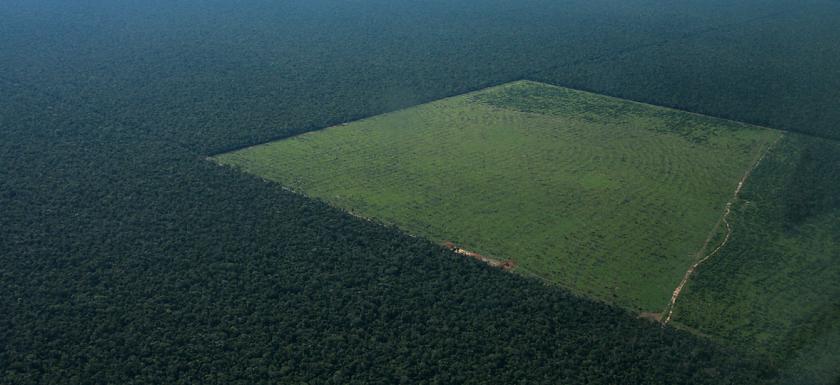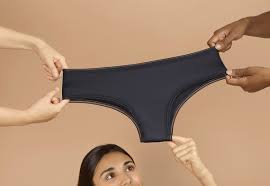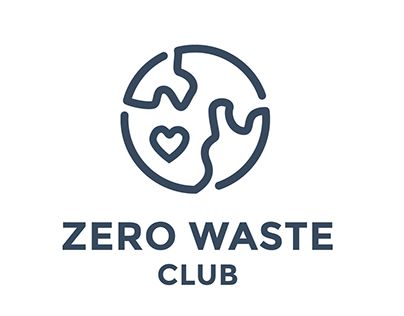Zero Waste Benefits More Than Just The Environment
Posted by Pawan Saunya onIt’s no doubt that living a zero waste and generally low impact lifestyle greatly benefits the environment. If you create less waste, you’re demanding less resources, helping to curb plastic pollution, and are making an effort to avert the climate crisis. What most people don’t think of is how this lifestyle benefits more than just the environment- it benefits our economy and our communities, too.
Integrating zero waste principles into businesses and local economies means resources are recirculated throughout the economy rather than being used once and then disposed of. This recirculation component leads to the creation of green jobs- benefiting both local communities and economies. A case study in Ontario, Canada showed that the recycling, composting, and diversion programs that are integrated into a zero waste economy generate 10 times more jobs than a generic landfill system. This isn’t just the case for Canada- a study conducted in Europe said that 500,000 jobs could be created if countries upped their recycling rate to 70%, and a study in the U.S. showed similar results, saying that 1.1 million jobs could be created if the country upped their recycling rate to 75%. The jobs that recycling creates are also well-paying and have a low barrier to entry, making the work accessible to all.

Businesses could save a lot of money by integrating zero waste principles into their frameworks. Companies who reduce their waste decrease their need for resources and energy, which in turn saves them money, all while helping the environment. One hospital put this sentiment to the test, and ended up saving $5.6 million. When businesses save money on resource and energy consumption, they can put more money towards research and development, job creation, and charity- which ultimately goes to helping the greater good.
The greater good is also benefited when zero waste principles are used to reduce food waste. A large part of food waste reduction frameworks is getting restaurants, grocery stores, and community members to donate food (that they would otherwise throw away) to food banks. Not only is this extremely effective in reducing waste, but it also allows food banks to help more community members in need. In the U.S., nearly half of the food in the U.S. goes to waste, and millions go hungry everyday. One non-profit, Feeding America, utilized the zero waste principle of food rescue to help combat both of these issues- and it worked. They recovered 3.5 billion pounds of food, and it all went to directly to feed those in need.

Going zero waste also helps spur the economy of local communities. When you go zero waste, you’re going to increase your reliance on local artisans and farmers to supply you with sustainably made products and produce. By buying local, you’re spurring your local economy and supporting fellow community members rather than large, polluting corporations. This practice of supporting local has been shown to be more beneficial for the overall economy than supporting large corporations. Buying food locally has also been proven to increase community health and create a safer food supply chain, all while benefiting the environment.
Overall, the heart of the zero waste movement is in environmental protection and sustainability, but the benefits spill over into almost all facets of life. The economy, local communities, and those in need are all benefited when zero waste principles are utilized by businesses, governments, and individuals alike.
How has going zero waste benefited your life?

Kayla Guilliams
Is the blog manager for Zero Waste Club, combining her love for writing with her passion for all things environmental sustainability. She is currently a student at the University of North Carolina at Chapel Hill where she is studying journalism, environmental studies, and food studies in hopes of building a career in environmental activism. You can find her on Instagram as @kaylaguilliams.
Meat, Not Tofu, Is Causing Soy-Related Deforestation
Posted by Pawan Saunya onAmid news that deforestation in the Brazilian Amazon is linked to soy production, many have been calling on plant-based eaters to stop eating such soy-rich diets, claiming they’re the cause of the deforestation that is destroying habitats and driving climate change. However, those who are claiming this seem to be ignoring the main consumers of Brazilian soy- China’s meat industry.
Soy production in Brazil is a cause of what has been called a “forest-to-farm” movement that is taking place in Brazil. Forest is being destroyed to make room for farms to enrich Brazil’s economy, but because of the poor soil that’s under the forest, the farmers can only use the land for a short period of time before they have to leave it and deforest more land for farmland. This deforestation and forest-to-farm movement is being encouraged by president Bolsonaro, who has created a government that is pushing for deforestation to enhance economic growth, while ignoring environmental protection and calling protections put on the amazon too strong.
Deforestation in Brazil is being linked to soil degradation, water pollution, habitat loss, species endangerment, and high densities of carbon emissions that occur when trees collapse, so much so that deforestation is the second largest source of human caused carbon to the atmosphere. In fact, 29% of Brazil’s greenhouse gas emissions come from soy-related deforestation. The impacts of deforestation are becoming more intense as the forest-to-farm movement grows, and the movement is growing at the hands of Brazil’s soy market.

via the Union of Concerned Scientists
Brazil is the second largest producer of soybeans in the world, behind the U.S., and is the largest exporter of the crop in the world. 12% of Brazil’s total exports are soybeans, making soy a main driver of the country’s economy. Where does most of this Brazilian soy go? China.
China is the top importer of soy in the world, importing 63% of the world's soy exports. China imports most of its soy from Brazil, meaning they’re a main driver of Brazil’s soy market, thus a main driver of the soy related deforestation happening in the country.
China imports so much soy because of their need to use soybean meal to feed their growing meat industry- specifically for hogs and poultry. As China’s population grows, more people are moving into the middle class, and their hunger for meat is growing. China’s meat consumption has grown by 24% since 2011, and is only expected to grow as their middle class is predicted to double in size within a decade.

China isn’t the only place where soy is mainly used for animal feed- it’s the same case worldwide. In the U.S., over 70% of soy grown goes to animal feed. Worldwide, 70-75% of soy is used for animal feed. Overall, only 6% of soybeans grown around the world go straight to human consumption in the form of something like tofu or soy milk.
Overall, the growing amount of vegans and vegetarians worldwide may be leading to an increase in tofu and soymilk consumption, but this isn’t the reason why Brazil is facing such extreme deforestation. The global meat industry that gobbles up a large majority of the soy produced around the world is encouraging the growth of the soybean market in places like Brazil, thus encouraging a forest-to-farm movement that is leading to habitat destruction and greenhouse gas emissions. The most effective way that this soy-related deforestation could be stopped would be to stop eating meat, and perhaps, to eat more tofu.

Kayla Guilliams
Is the blog manager for Zero Waste Club, combining her love for writing with her passion for all things environmental sustainability. She is currently a student at the University of North Carolina at Chapel Hill where she is studying journalism, environmental studies, and food studies in hopes of building a career in environmental activism. You can find her on Instagram as @kaylaguilliams.
Recycling is Sustainable, Not Perfect
Posted by Pawan Saunya onWhen I was a kid, I was told that to be sustainable, I needed to recycle. Glass, plastic, aluminum, cardboard- it all belonged in the blue bin. For years, I recycled these materials mindlessly in an effort to save the planet. However, recycling isn’t as sustainable or straightforward as I once thought, especially after China’s ban on some recycling imports left the global recycling system in chaos.
THE BAD:
The truth is, a lot of what we put in our blue bins doesn’t even end up getting recycled. Some facilities take in more recyclables than they can handle and end up sending their surplus to landfills. Other times, facilities end up with recycling that has been contaminated, rendering it unrecyclable. This is why China stopped taking a lot of the world's recyclables- the shipments they were receiving were too contaminated. Contaminants include things like most to-go coffee cups, plastic bags, and low-grade plastics, which are all unrecyclable. Food waste is also a big contaminant, as it renders materials unrecyclable. These contaminants usually arise from single-stream recycling systems where everything is placed in one bin and consumers receive little to no guidance on what can and can’t be recycled. These contaminants make it more expensive to process recyclables, and sometimes cause them to be sent to the landfill.
The other problem is that some materials can only be recycled a few times before they ultimately end up in the landfill. Paper can only be recycled five to seven times before it’s unrecyclable, but plastic is the worst- it can only be recycled one to two times. For example, say you buy a container made from virgin plastic, and when you’re done with it, you recycle it. Assuming it actually gets recycled, it will have to be recycled into something that is made of lower grade plastic, such as a household item, because the polymers in the plastic will get broken down in the recycling process. When that household item then gets sent to be recycled at the end of its life, it probably won’t be recycled into anything because of being too low grade and not meeting recycling requirements.This creates a lot of contamination problems, as most people think you can just throw anything made of plastic into recycling. In reality, if what you’re attempting to recycle is too low-grade of plastic, it needs to go straight to a landfill, where it will take over 400 years to degrade. Because of both contamination issues and the dwindling recyclability of plastics, 71% of the world's plastic is sitting as waste in landfills or as litter in habitats.and only 9% is recycled.
This issue with plastic is also because of the complexity of our plastic system. There are so many different kinds of plastic used to make different goods that it makes it hard for consumers to know which plastics they can and can’t recycle. There are seven predominantly used types of plastics that vary in their recyclability, and to make it more complicated, all recycling facilities differ in what plastics they will take. Consumers generally either think they can recycle all plastics, or get so frustrated trying to figure out what plastics they can or can’t recycle that they throw them all in the recycling, posing a contamination risk, or send them straight to a landfill.

THE GOOD:
The good news is some materials don’t have dwindling recyclability- they can be recycled over and over and over again. Glass and metal, most notably aluminum, are able to be recycled indefinitely without sacrificing their quality or durability. This means if you’re recycling anything made from glass or metal, there’s a higher chance that it’ll be recycled and won’t contaminate batches of recycling. It also means these materials never have to end up sitting in a landfill or polluting natural habitats- they can always be reused or recycled. However, like all materials, you still have to make sure you wash off any food that is on the material when you’re recycling, or you’ll be posing a contamination risk.
The other good news is that recycling saves energy, resources, and money no matter what material you’re dealing with. Recycling aluminum is particularly energy efficient and money saving, with recycled aluminum taking 95% less energy to create than new aluminum. Making recycled materials from steel, glass, paper, and plastic also requires less energy than creating new materials, just not quite at the level of aluminum. Using recycled materials rather than new also means less raw materials and natural resources will have to be extracted, which decreases habitat destruction and emissions related to resource extraction. Saving energy and resources ultimately results in saving money, and helps mitigate climate change by reducing emissions.
Overall, recycling is a good thing- it’s at the heart of a circular economy and allows us to reuse products that are at the end of their life rather than throwing them to a landfill. It reduces energy use, lowers natural resource extraction, decreases greenhouse gas emissions, and it saves us money. However, as much as we need recycling, we also need to reduce our need to recycle by switching to using reusable, long lasting products, and we need to overhaul our recycling system with the help of circular legislation and local governmental action.

THE SOLUTIONS:
First, we need to reduce what we consume and work to reuse what we do. Stepping away from single-use products, even if they are made from infinitely recyclable materials like glass and aluminum, and moving towards reusable products will reduce the number of materials that are sent to recycling, therefore enhancing the quality of our recycling facilities. Single-use products that are made from recycled materials are more sustainable than single-use products made from raw materials, but what’s even more sustainable is using reusable products made out of materials like glass and aluminum, and only sending them to be recycled once they’re at the end of their life. By switching to a system where we predominately create and recycle reusable goods, rather than single-use, we reduce the total quantity of goods we are creating and recycling, but we maximize the amount of energy, resources, emissions and money we save.
The second thing we can do to enhance our recycling system is to make our plastic system less complex and to move away from plastic in general. Ideally, to do this, we would streamline our plastic production into two types of plastic- one rigid and one flexible- that all recycling facilities accept. This would simplify both the creation and disposal of plastic, and would make it easier for consumers to recycle, and would also create a higher market value for these plastics that businesses would want to tap in to by collecting back plastic for reuse. However, this is unlikely to happen as it would take a massive manufacturing overhaul, and all plastics are eventually rendered unrecyclable anyways, therefore the best thing to do is to avoid plastic as much as possible. This reduces recycling contamination, decreases plastic pollution, saves marine habitats, and reduces the general environmental harm caused by plastic creation.
Lastly, we need to move away from single-stream recycling systems into pre-sorted recycling systems. Essentially, a single-stream recycling system is one where you throw all of your recyclables into one bin and they are sorted after collection. While this makes recycling easier, it disconnects consumers from the process of recycling, as they don’t have to be as familiar with the different materials their local recycling facility takes. These systems are all the rage in America- a country with a failing recycling system. In countries like Wales where recycling is wildly successful, a system where consumers sort their recycling before collection is used. By having consumers sort their recycling, the consumers are forced to become familiar with what their local recycling facility can recycle, which reduces contamination rates and increases recycling productivity. To incentivize people to do this, fees are charged on garbage pickup based on weight, so consumers will take the extra time to sort their recycling rather than throwing it all in the garbage. While there is a large learning curve, these systems are proving to be at the heart of countries who are making strides towards zero waste goals.
Companies who want to tap into the money-saving abilities of recycling could prove to be the pioneers of more efficient recycling systems. Tech giant Apple is working to use no raw materials in manufacturing- they want to source all of their materials from things like dead devices and manufacturing scrap. They have a MacBook air with a recycled aluminum case, and a robot that can speedily rip apart iPhones for reuse. However, Apple will have to make a lot more strides in order to reach their goal of being 100% circular. If they have the motivation and support from investors, they could be pioneers of circular architecture in both the business and waste management world. They would have to figure out how to recover a large percentage of the products they sell once their consumers are done with them, which would require a systems overhaul from Apple, Apple consumers, and waste management services.

While recycling has its problems, we should never forget that it’s the elementary pinnacle of environmental sustainability for a reason. Recycling has enormous potential to launch us into the heart of a circular economy, but we have to tap into this potential by valuing the three R’s in order (reduce what you consume, reuse what you can, and then recycle what you need) and overhauling both our recycling and plastics system. This will take participation from business, government, academia, and consumers, and won’t prove to be easy- but that doesn’t mean it’s impossible.

Kayla Guilliams
Is the blog manager for Zero Waste Club, combining her love for writing with her passion for all things environmental sustainability. She is currently a student at the University of North Carolina at Chapel Hill where she is studying journalism, environmental studies, and food studies in hopes of building a career in environmental activism. You can find her on Instagram as @kaylaguilliams.
The Importance of Eating Seasonally and Locally
Posted by Pawan Saunya onAs a society, we live in a world where we expect everything to be instant and accessible- including our food. It has become the norm for apples to be available all year round, and to be able to buy strawberries in December. If you fancy a banana, you just go to the closest supermarket- it’s that easy! We have become so disconnected from the food we eat that we don’t question why we’re eating a banana from Ecuador or enjoying raspberries when there’s snow on the ground. The damage this disassociation is doing to our environment is widespread, and changes need to be made urgently.
Currently, 95% of our fruit comes from abroad, along with over half of our vegetables. The carbon emissions produced by this transportation is greatly damaging the environment. In fact, studies have shown that if air freight is used for a product, the carbon emissions of that product go up by a factor of 10. Buying British produce obviously reduces these carbon emissions, however, it doesn’t completely solve the problem if you’re still buying from across the country. Ideally, we need to be looking at buying locally. If you buy from a shop selling local produce, it’s likely that the food has been grown 10-30 miles away, and is coming straight from the farm that grew it. It is also likely that this food has been harvested within the last 24 hours (rather than over a week ago), meaning it will be much fresher.

Buying in season is also vital. You can buy British tomatoes throughout the year, however, this does not mean they are in season all of the time. When not in season, they will have been grown under heated glass for much of the year. For tomatoes grown out of season under heated glass in the UK, CO2 emissions are about 2.5kg per kg of fruit. When you compare this to the CO2 impact of trucking them in from Spain, where they grow naturally, the emissions of carbon is 10 times greater. This shows that although it is important to buy locally, it is even more important to buy in season.
If we want to save our planet it is vital that we start being more conscious about where our food is coming from. Making some small changes isn’t hard but can make a big difference, and you might even discover something new you like along the way.
The benefits of buying locally and in season include:
•A lower carbon impact
•Supporting your local area
•Fresher food
•Produce is likely to be organic
•Higher appreciation for what you are eating (not having access to strawberries all year round means when you do eat one, it will taste all the better)

Local and Seasonal Shopping Tips:
•Visit farmers markets! There are over 300 markets held weekly across the country. Take a look here to locate your nearest market.
•Buy from shops that have a proven link to a nearby farm- butchers, bakers, greengrocers, and delis are all great places for this.
•When in a supermarket, look for the Union Jack flag on produce.
•Before you pick up a piece of fruit or veg, think twice about where that has come from. For example, it doesn’t take much thought to realize bananas don’t grow naturally in the UK.
• Consider Box schemes- these provide fresh, seasonal produce from smaller producers right to your door. The Soil Association is a great website to get more information on the schemes available.
•Farms with a Pick Your Own Scheme are worth a visit- picking your own produce can be fun, and you’ll have the assurance of knowing that what you’re picking is both local and in season. Go here to find farms local to you.

Poppy Robson
Is working as an intern for Zero Waste Club, bringing together her love of the environment and her passion for writing. She has a love of nature and the outdoors and is always looking to encourage more people to lead a zero waste life. You can find her on Instagram as @poppyrobson.
Six Companies Who Are Paving the Way for a Sustainable Future
Posted by Pawan Saunya onAs the climate crisis looms and marine environments become plagued with plastic pollutants, transitioning our economy to one that values sustainability and a circular model is more vital than ever. As governments remain hesitant to overhaul their economy to one that rids of single-use products, values sustainable development, and promotes a zero-waste mindset, businesses are taking it upon themselves to transition their business models to ones that push forward this idea of a zero-waste, circular economy. Here are six companies who are inspiring us to think circular.
Subaru
While it may seem ironic to include a car manufacturer in with companies doing environmental good, Subaru is truly creating a circular model of car manufacturing that could serve as a model for other manufacturers in years to come. Subaru is a zero-landfill automaker and has been such since 2004- the last time they sent something to a landfill. They have been pioneers of sustainable practices in the automotive industry since the late 80s, receiving a Recycling Achievement award in 1989 for their efforts to reduce waste and an Environmental Purification award in 1993 for their paint recycling program that kept over three million pounds of paint from landfills.

Plaine Products
Plaine Products is working to divert plastic waste from landfills by targeting a piece of plastic found in most peoples homes- shampoo bottles. Plaine Products uses an online, subscription-based platform to sell non-toxic shampoo, conditioner, body wash, and body lotion in reusable bottles. All of their ingredients are vegan and approved by the Environmental Working Group. Consumers can subscribe to the website to receive a new bottle of product as often as they see fit. Each time consumers receive a new bottle of product, they also receive a box and shipping label to return the old bottle for sanitation and reuse. This model is combining zero waste with convenience, attracting those who want to easily and conveniently reduce their waste. The company also partners with non-profits and other groups to help advance global sustainability efforts.

THINX
One woman will use nearly 11,000 single-use, disposable menstrual products in her lifetime. Many of these products will be made with synthetic materials, meaning they’ll still be sitting in a landfill long after we’re gone. As people have started moving towards a zero waste, circular mindset, many women have recognized the need for reusable period products- that's where THINX comes in. THINX makes reusable period underwear for menstruating humans, diverting single-use period products like pads and tampons from the landfill. They have a goal of making the company zero waste by 2025, and have made empowering women one of their central goals (a goal that will help fight climate change).

Algotek
While having no single-use products on the market is the ideal, circular world, many companies simply won’t (or can’t) completely rid of their use of single-use products. Algotek is hoping to meet these companies in the middle by providing the market with an algae-based plastic alternative. This algae-based “plastic” is 100% biodegradable and dissolves safely into water- making it safe for marine ecosystems. Algotek plastics are diverse in their thickness and durability, making it easy for them to tailor to the needs of different companies. Algotek is sustainable from the production side of things as well, as growing the algae needed to make these plastics absorbs CO2 from the atmosphere, offsetting emissions. Producing the plastics also creates no hazardous waste, and any byproduct from the creation of the plastic is recycled back into the system of production.

Loop
Loop is an online, global shopping platform that is working with big companies like Clorox, Febreze, Häagen-Dazs, and Pantene to sell their products in reusable packaging. Consumers can go to the Loop website to buy the name brand cleaning products, beauty products, or food products they would normally buy in any typical store. The twist? Instead of receiving them in plastic bottles, their usual packaging, they will receive them in reusable, stainless steel containers. When they use up the product, they simply send back the containers to Loop, who will sanitize and reuse the containers for future orders. This platform of selling traditional products in a non-traditional way is attracting consumers who want to reduce their waste, but don’t want to give up the products from big name brands that they have grown to love.

Zero Waste Club
And of course us. Hahaha. We are dedicating our lives to helping the planet and people. So if you don’t already know; Zero Waste Club is an online shopping website based in aiming to make plastic-free, sustainable, and ethical living accessible. They sell food, beauty products, and household products that are all made with sustainable and ethical practices, and also offer a wholesale option for other shops looking to incorporate sustainable, plastic-free items into their inventory. All of their items come in plastic-free packaging and are shipped completely plastic-free. In addition, the cost of planting a tree is incorporated into the cost of each item, so with each item they sell they plant a tree through the Eden Reforestation Projects. So far with this initiative, they have planted 14,140 trees.


Kayla Guilliams
Is the blog manager for Zero Waste Club, combining her love for writing with her passion for all things environmental sustainability. She is currently a student at the University of North Carolina at Chapel Hill where she is studying journalism, environmental studies, and food studies in hopes of building a career in environmental activism. You can find her on Instagram as @kaylaguilliams.
